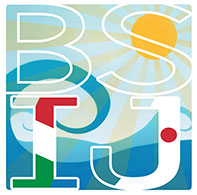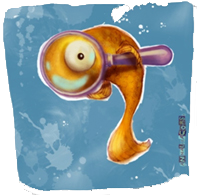
6th Bilateral Seminar Italy-Japan
&
2nd Marine NanoEcoSafety Workshop
Palermo, Italy, 17-20 November 2014

Programmes
2nd Marine NanoEcoSafety Workshop (MANET)
Monday, 17 November
| 14:00 |
Registration |
| 14:30 |
Welcome of the Organisers Ilaria Corsi & Valeria Matranga |
| 14:40-15:00 |
Opening Remarks Authorities' Speeches with the participation of: |
| 15:00-15:20 |
Niall McDonough (Oostende, Belgium) Unravelling the complex links between the oceans and human well-being: developing an interdisciplinary research capacity in Europe |
|
Session 1 Nanomaterials interaction at marine ecosystem level Chairs: Gary N. Cherr & Cristina Nasci |
|
| 15:20-16:00 |
Keynote Lecture Metal oxide nanomaterials induce oxidative stress and act as chemosensitizers in sea urchin embryos |
| 16:00-16:15 |
Cristina Nasci (Venice, Italy) NM in marine environment: a stakeholder’s point of view |
| 16:15-16:30 |
Miren P. Cajaraville (Leioa, Spain) Classification of the toxic potential of metal-bearing nanoparticles and the corresponding bulk and ionic forms based on in vitro tests with mussel cells: a contribution to the risk assessment of nanomaterials in the marine environment |
| 16:30-16:45 |
Antonio Marcomini (Venice, Italy) Species Sensitivity Weighted Distribution (SSWD) as screening tool for ecological risk assessment of engineered nanomaterials: The n-TiO2 case study |
|
Session 2 Nanomaterials fate and behaviour in salt water Chairs: Jerome Labille & Antonio Marcomini |
|
| 16:45-17:25 |
Keynote Lecture Assessing the behavior and fate of manufactured nanoparticles in seawater. Case study for nano-TiO2 used in sunscreen |
| 17:25-17:40 |
Diana Antonio (Ispra, Italy) Silver nanoparticles behavior in artificial sea water by mean of AF4 |
| 17:40-18:00 |
Poster Session |
| 18:00 |
Wine & Cheese |
Tuesday, 18 November
|
Session 3 Nanomaterials mechanisms of toxicity Chairs: Julian Blasco & Francesco Regoli |
|
| 9:00-9:45 |
Keynote Lecture Marine Nano Ecotoxicology: a review of progress on fish, crustaceans, bivalves and other species |
| 9:45-10:00 |
Ambrogina Albergamo (Messina, Italy) Investigation of protein expression signatures associated with long-term exposure to nanosized CuO and Cu2+ ions in the clam Ruditapes decussatus |
| 10:00-10:15 |
Ilaria Marisa (Padua, Italy) Effects of zinc oxide and titanium dioxide nanoparticles on haemocyte parameters of the marine bivalve Ruditapes philippinarum |
| 10:15-10:30 |
Tiziana Cappello (Messina, Italy) Effects of CuO NPs on first developmental stages of the sea urchin Arbacia lixula |
| 10:30-10:45 |
Isabella Buttino (Livorno, Italy) Toxicity of nickel on the marine calanoid copepod Acartia tonsa: nickel chloride versus nanoparticles |
| 10:45-11:00 |
Thiago Rocha (Faro, Portugal) Tissue-specific accumulation and metallothionein induction in mussels Mytilus galloprovincialis exposed to quantum dots and soluble cadmium |
| 11:00-11:30 |
Coffee break |
|
Session 4 Model/Target marine organisms from invertebrates to fish Chairs: Laura Canesi & Richard Handy |
|
| 11:30-12:15 |
Keynote Lecture Interactive effects of nanoparticles with other contaminants in aquatic organisms: friend or foe? |
| 12:15-12:30 |
Catherine Mouneyrac (Angers, France) The use of two marine invertebrate species; the bivalve mollusk Scrobicularia plana and the ragworm Nereis diversicolor, to assess ecotoxicity of metal-based engineered nanoparticles |
| 12:30-12:45 |
Annalisa Pinsino (Palermo, Italy) Effects of titanium dioxide nanoparticles on sea urchin immune defence |
| 13:00-14:00 |
Lunch |
| 14:00-14:15 |
Julian Blasco (Puerto Real, Spain) Uptake, elimination and oxidative stress response to 0.75µg L-1 citrate gold nanoparticle exposure in the marine clam R. philippinarum |
| 14:15-14:30 |
Marianna Santonastaso (Caserta, Italy) Marine environmental contamination by titanium dioxide nanoparticles (n-TiO2): a genotoxicological study in two edible species |
| 14:30-14:45 |
Maria Luisa Vannuccini (Siena, Italy) Combination effects of nano-TiO2 and 2,3,7,8-tetrachlorodibenzo-p-dioxin (TCDD) on biotransformation gene expression in the liver of European sea bass (Dicentrarchus labrax) |
| 14:45-15:00 |
Filomena Mottola (Caserta, Italy) Co-exposure to titanium dioxide nanoparticles and cadmium: Genomic, DNA and chromosomal damage evaluation in the marine mussel (Mytilus galloprovincialis) and in the fish European sea bass (Dicentrachus labrax) |
|
Session 5 Nano frontiers in the marine environment: from nanoplastics in marine litter to nanoremediation Chairs: Heather Leslie & Giovanni Libralato |
|
| 15:00-15:45 |
Keynote Lecture The challenges of understanding nano-sized plastic particles in the sea |
| 15:45-16:00 |
Elisa Bergami (Siena, Italy) Nanoplastics impact on marine organisms: accumulation and toxicity of polystyrene nanoparticles in three model species |
| 16:00-16:15 |
Camilla Della Torre (Siena, Italy) Effects of amino polystyrene nanoparticles on sea urchin embryo development and stress response |
| 16:15-16:30 |
Caterina Ciacci (Urbino, Italy) Preliminary results on the effects of cationic polystyrene nanoparticles in the mussel Mytilus galloprovincialis |
| 16:30-16:45 |
Giovanni Libralato (Venice, Italy) Embryotoxicological effects of nFe, nCo and nNi on Mytilus galloprovincialis Lamark: preliminary results |
| 16:45-17:00 |
Elena Bocci (Siena, Italy) Titania mesoporous cleaning up in the marine environment: ecotoxicological study for the definition of eco-friendliness |
| 17:00 |
Concluding remarks Ilaria Corsi & Valeria Matranga |
| 18:00-18:30 |
Cocktail to welcome the 6th BSIJ National Experts |
| 20:30 |
Social dinner at "Casena dei Colli" |
6th Bilateral Seminar Italy-Japan
Tuesday, 18 November
| 18:00-18:30 |
Welcome to the 6th BSIJ National Experts |
| 20:30 |
Social dinner at "Casena dei Colli" |
Wednesday, 19 November
| 8:45 |
Registration |
| 9:00-9:20 |
Opening Remarks Welcome of the Organisers Addresses of Authorities |
| 9:20-10:00 |
Keynote Lecture Maria Byrne (Sydney, NSW, Australia) Change in the world's oceans: responses of echinoderm development to warming and acidification and analysis of the effects of multiple stressors on marine embryos and larvae |
| 10:00-10:15 |
Valeria Matranga (Palermo, Italy) Physical and Chemical Impacts on Marine Organisms: 10 years later the first Bilateral Seminar Italy-Japan |
|
Session 1 Current impacts in natural environment, effects on marine organisms Chairs: Francesca Garaventa & Yukio Yokota |
|
| 10:15-10:30 |
Yukio Yokota (Aichi, Japan) Valuable lessons of the past |
| 10:30-10:50 |
Mari Ochiai (Matsuyama, Japan) PCBs, PBDEs and their hydroxylated metabolites in the brain of free-ranging toothed and baleen whales |
| 10:50-11:10 |
Coffee break |
| 11:10-11:30 |
Francesco Regoli (Ancona, Italy) Environmental impact of the Costa Concordia wreck through an integrated, multidisciplinary Weight of Evidence approach |
| 11:30-11:50 |
Francesca Garaventa (Venice, Italy) Use of ecotoxicity tests for the evaluation of marine sediments toxicity: a case study |
| 11:50-12:10 |
Paola Gianguzza (Palermo, Italy) Exploring the impact of the invasive algae Caulerpa taxifolia var. distichophylla and C. cylindracea on the performance of the sea urchin Paracentrotus lividus |
| 12:10-12:30 |
Chiara Bonaviri (Palermo, Italy) Climate change potentially affect keystone predation in subtidal systems |
| 12:30-12:50 |
Simone Cappello (Messina, Italy) Biotechnological applications for potential recovery strategies: the “SYSTEMS BIOLOGY” in the study of xenobiotic effects on marine organisms for evaluation of the environmental health status |
| 12:50-13:10 |
Giuseppe Mancini (Catania, Italy) SEAPORT and STITAM: two Italian National Project for the recovery of polluted harbours and marine areas |
| 13:15-14:30 |
Lunch |
|
Session 2 Response mechanisms of marine organisms to environmental impacts Chairs: Keita Kodama & Marco Faimali |
|
| 14:30-14:50 |
Keita Kodama (Tsukuba, Japan) Exploration of factors affecting abundance in early-life stages of marbled sole, Pseudopleuronectes yokohamae in Tokyo Bay, Japan |
| 14:50-15:10 |
Marco Faimali (Genoa, Italy) Old model organisms and new behavioral end-points: swimming alteration as an ecotoxicological response |
| 15:10-15:30 |
Julian Blasco (Puerto Real, Spain) Laboratory simulation of CO2 leakages during injection and storage in sub-seabed geological formations: metal accumulation and toxicity in the model benthic organisms Hediste diversicolor and Ruditapes philippinarum |
| 15:30-15:50 |
Coffee break |
| 15:50-16:10 |
Tiziana Cappello (Messina, Italy) Effects of petrochemical contamination on caged marine mussels using a multi-biomarker approach: histopathology, metabolomics, neurotoxicity and DNA damage |
| 16:10-16:30 |
Narimane Dorey (La Rochelle, France) Combined effects of ocean acidification and cadmium on the development of the sea urchin Paracentrotus lividus |
| 16:30-16:50 |
Marco Munari (Padua, Italy) Oxidative stress-related parameters in adults and larvae of the clam Ruditapes philippinarum under different combinations of pH values and diclofenac concentrations |
Thursday, 20 November
|
Session 3 Analysis of the effects on marine organism caused by environmental impacts Chairs: Hajime Watanabe & Francesco Regoli |
|
| 9:00-9:20 |
Hajime Watanabe (Suita, Japan) Genetic engineering of Daphnia magna for making biomonitoring tool |
| 9:20-9:40 |
Maria Costantini (Naples, Italy) Molecular response to toxic diatom-derived aldehydes in the sea urchin, Paracentrotus lividus |
| 9:40-10:00 |
Anna Palumbo (Naples, Italy) The deleterious effects of Ostreopsis cf. ovata bloom on Paracentrotus lividus are mediated by nitric oxide |
| 10:00-10:20 |
Rosa Bonaventura (Palermo, Italy) Co-exposure to cadmium and UVB radiation impairs sea urchin embryo development and induces cell stress response at gene and protein levels |
| 10:20-10:40 |
Carlo Giacomo Avio (Ancona, Italy) Microplastics in the marine environment: a true ecotoxicological risk? |
| 10:40-11:00 |
Coffee break |
| 11:00-11:20 |
Laura Canesi (Genoa, Italy) Organic contaminants as potential obesogens in mammalian and marine invertebrate cells |
| 11:20-11:40 |
Siti Jaafar (Cork, Ireland) Acute toxicity from pro-oxidant Copper in Mytilus edulis gills: a Redox proteomic analysis |
| 11:40-12:00 |
Oriana Migliaccio (Naples, Italy) Nitric oxide mediates the response to metals in Paracentrotus lividus developing embryos |
| 12:00-12:20 |
Chiara Martino (Palermo, Italy) Asymmetric skeleton patterns induced by gadolinium ions in sea urchin embryos: focus on mechanisms regulating skeletogenesis and comparison among phylogenetically distant species |
| 12:20-12:40 |
CNR IN ANTARCTICA: EMOTIONS FROM THE WHITE CONTINENT (movie, photo and project resume)
|
| 13:00-15:00 |
Lunch & Poster Session |
|
Session 4 Sustainable use of marine resources Chairs: Adrianna Ianora & Makoto Kakinuma |
|
| 15:00-15:20 |
Makoto Kakinuma (Tsu, Japan) Disorders induced by environmental stress in Pyropia yezoensis (Rhodophyta) |
| 15:20-15:40 |
Adrianna Ianora (Naples, Italy) Marine microalgae as a sustainable source of bioactives for drug discovery |
| 15:40-16:00 |
Michela Sugni (Milan, Italy) Echinoderms as sustainable source of collagen for innovative applications in regenerative medicine |
| 16:00-16:20 |
Masato Kiyomoto (Tokyo, Japan) Long-term preservation of echinoderm sperm under non-cryo condition for ecotoxicological bioassay |
| 16:20-17:00 |
General Discussion: Environment and marine life in the future - for a sustainable society |
Friday, 21 November
|
Excursion to be announced Reservation and payment necessary for not invited national experts |
Please wait... Checking Javascript functionality

If you continue to see this sentence for more than 20 seconds,
please enable Javascript in your browser.
The advanced functionality of this site depends on Javascript. We are sorry, but the contents of this page cannot be displayed by your browser in its current state.
For instructions on how to activate Javascript in your browser, you may try this link (you will be re-directed to a website not associated with Azuleon but, last time we checked, the instructions there were clear and accurate).
For any further assistance, please contact the Azuleon webmaster.
Registration
& Payment
14 July 2014
to
10 October 2014
Late registrations will be accepted until 30 October 2014 at a higher fee. Check the Information page for further details.
Abstracts
14 July 2014
to
10 October 2014
![]() New deadline
New deadline ![]()
Organising secretariat


